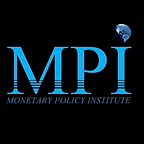Will the BRICS implement the Keynes Plan?
Sergio Rossi
Full Professor, Department of Economics
University of Fribourg, Switzerland
Monetary Policy Institute Blog #139
“If a monetary–structural reform of the current international monetary regime will never come from the initiative of the actually privileged country, an array of major geopolitical tensions could provide the impetus to de-dollarize this regime, setting up thereby an orderly working international monetary system before long — which will also be an important factor of peace at global level.”
BRICS is the acronym for the group of countries including Brazil, Russia, India, China, and South Africa. The political representatives of these five countries have been gathering since 2010, after some informal meetings among them in the second half of the 2000s. Their aim consists in providing an alternative bloc to the Western countries, particularly as regards the globalization of economic activities. To date, the BRICS community has been integrating a number of other countries, notably those in the so-called “Global South”, discussing several issues such as economic development, foreign trade agreements, financial stability, and de- dollarization of the global economy. The member countries of the BRICS community make up 47% of the world’s population, possess most of the world’s energy reserves and produce 36% of the goods and services purchased across the global economy. They are therefore an important part of globalization, whose choices can have several important consequences for the rest of the world, thus also for Europe and the United States, considering the importance of international trade and globalized financial markets.
The financial architecture of the BRICS consists in a multilateral development bank (called New Development Bank) and a contingent reserve arrangement that provides protection to its member countries against foreign-exchange pressures resulting from global trade as well as financial liberalization. Further, besides the idea to set up a BRICS payments system that should provide an alternative to the US-dollar based international settlement systems, there has been some discussions to issue a common currency to settle cross-border transactions in the BRICS community, reducing therefore the US dollar dominance and foreign-exchange volatility — both of which currently affect the BRICS economies negatively.
The idea to issue a common currency for a number of (BRICS+) countries is not new, as it echoes the Keynes Plan his author put forward during the 1944 Bretton Woods conference unsuccessfully. Keynes proposed to set up an International Clearing Union issuing what he called the bancor, which would not replace national currencies of member countries, each of them continuing to issue its own currency for the settlement of all its residents’ payment orders (be they domestic or cross-border). As Keynes pointed out:
“We need an instrument of international currency having general acceptability between nations […]; that is to say, an instrument of currency used by each nation in its transactions with other nations, […] private individuals, businesses and banks other than central banks, each continuing to use their own national currency as heretofore.”
A BRICS common currency is necessary to make sure all international transactions are paid finally, which means the seller’s country (either on the goods or financial markets) receives something of equal value from the purchaser’s country, so that the former has no further claim on the latter. This international currency is also necessary to stabilize the exchange rates of the underlying national currencies, so that their issuing countries can dispose of exchange rate volatility, thereby increasing foreign trade and economic growth, which contribute also to reduce financial instability and crises.
In the long run, the US dollar could thus be replaced by a truly international currency that central banks will use to pay finally both commercial and financial transactions relating to international trade. The BRICS might be leading the way, as they could decide to issue a common currency to be used for their bilateral transactions. This currency, whose name is not yet known, must be issued by a banking institution that is above the institutional level of national central banks, but it should not be a single currency like the euro. Unlike the European single currency, which is used by all residents of the euro area, the common currency of the BRICS would not replace their various national currencies, thus preserving their monetary sovereignty by allowing national central banks to decide and implement monetary policy choices that best suit the economic situation of their own countries.
If the BRICS member countries understand the need to establish a new monetary order at international level, however, they will have to avoid issuing a currency used as it has been the case for the US dollar, which allows the US economy “to give without taking, to lend without borrowing and to acquire without paying” as noticed by Jacques Rueff in 1971. As a matter of fact, such an “exorbitant privilege” (in Rueff’s own words) has been existing for the US economy since the Bretton Woods agreements signed in 1944 and has increasingly contributed to generate global financial crises that damage the common good eventually.
If a monetary–structural reform of the current international monetary regime will never come from the initiative of the actually privileged country, an array of major geopolitical tensions could provide the impetus to de-dollarize this regime, setting up thereby an orderly working international monetary system before long — which will also be an important factor of peace at global level.
